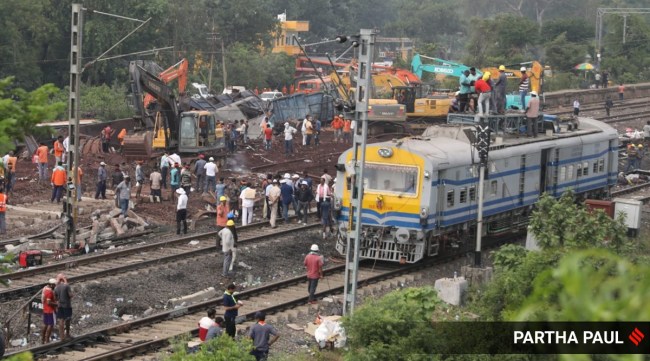Opinion Odisha train crash: What if it had been a plane or a premium train like Rajdhani?
The economic and social privilege the train crash victims possessed — or lacked — dictated the comfort and dignity they travelled in while alive. And now, class is dictating how the spectacle of their deaths is consumed
 More than 270 households altered forever, thousands left picking up the pieces after a derailed train crashed and burned through their lives. (Express Photo by Partha Paul)
More than 270 households altered forever, thousands left picking up the pieces after a derailed train crashed and burned through their lives. (Express Photo by Partha Paul) It has been three days since more than 270 people were killed in the Odisha train crash. More than 270 households altered forever, thousands left picking up the pieces after a derailed train crashed and burned through their lives.
But while the accident is dominating chatter time online and on TV channels, the attention has swivelled away from the actual scene of the tragedy, where people are still waiting outside morgues and hospitals, desperate for news of their loved ones.
Public attention is on spicier matters — the hunt for someone to punish, conspiracy theories, political mudslinging, and in the blighted times we live in, communalising. There are few RIP posts on social media, few pictures of victims in floral frames with a few lines about their lives. This accident struck the great teeming masses of India, and the victims seem to have no individual face, story, or tragedy to grab and hold public attention.
While every such tragedy is uniquely horrific and can’t be compared, imagine if this was a plane crash, or involved a more premium train, like a Rajdhani. Would the victims have been so quickly erased from the overall narrative, their part in the story taken care of with the announcement of an ex gratia?
Social media, of course, has been full of hot takes since Friday night. Arguments have been made that trains are unsafe because they are too cheap and hence there’s no money to maintain them (when the Railways are a government-run enterprise). That the efficiency of government servants is always suspect, because so many are hired through reservations (when, in fact, posts are lying vacant). That the Railway Minister should have resigned, because A, B, and C ministers in the past had. And the most vicious of all, that since the accident happened on a Friday, a certain community is probably involved.
In all of this, the accident is a mudda (issue) as a whole, the bodies serving to make the mudda bigger and heavier. The rich suffer as individuals, the common man dies as a statistic.
The government response, too, has quickly moved to post-tragedy mode. A CBI inquiry is on, the prime minister has said the guilty won’t be spared. But while the exact cause of this particular crash is still being looked into, it is no secret that the Railways suffers from chronic issues. The cause of the Odisha tragedy must be identified, and if individuals are found guilty, they should face due process. But for the public transporter to become truly safer, more mundane, less headline-grabbing steps are needed — filling vacant posts, augmenting carrying capacity, improving punctuality, carrying out regular maintenance.
The millions who travel in trains like the Coromandel and the Bengaluru-Howrah Express lack the noise-making capabilities that Vande Bharat or Tejas Express commuters possess about smelly toilets and poor-tasting food. And so, their potentially life-threatening issues — packed like sardines in overheated bogies on an overused, underserved mode of transport — go unheard. A particular trigger may have caused the Odisha tragedy, but the overall neglect and poor maintenance of the Railways is because the class of the consumer dictates the facilities offered to them. Facilities should come at a premium; life, of course, is cheap.
The economic and social privilege the train crash victims possessed — or lacked — dictated the comfort and dignity they travelled in while alive. And now, class is dictating how the spectacle of their deaths is consumed.






